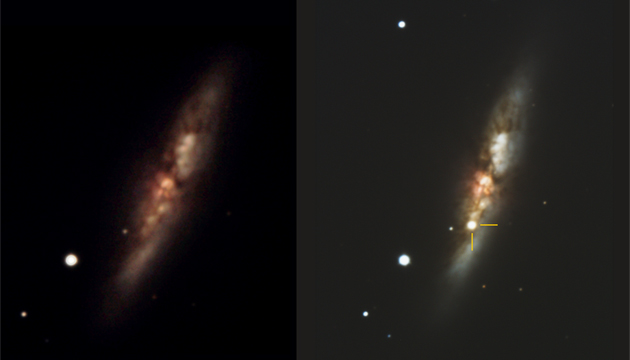
Once upon a time in a galaxy 12 million light years away, a tiny white dwarf star went supernova, and for a few fleeting weeks was elevated in brightness to outshine the rest of the stars in its galaxy combined.
The far, far away galaxy is called Messier 82 and lies in the direction of the constellation Ursa Major (Big Bear, Big Dipper). Also known as the “Cigar Galaxy,” owing to its long narrow shape and maybe its ashy appearance in small telescopes, M-82 has been known to us since the late 18th century when Charles Messier observed and cataloged it during his search for comets.
The supernova, 2014-J, was first noticed on January 21st, though may have been visible to us as early as the 14th. Appearing now as a bright dot set in the glow of the Cigar, 2014J has been captured by many telescopes the world around. Chabot Space & Science Center’s 36-inch reflector, Nellie, has also been affording visitors a peek through the eyepiece during our Friday and Saturday night observing hours.
2014J has been identified as Type 1A supernova, a special and very useful kind of stellar explosion.
An “ordinary” supernova occurs when a massive star runs out of fuel and can no longer support its bulk against its own gravity. With the forces of nuclear fusion in its core suddenly snuffed out, it collapses and ignites the leftover core material in a sudden frenzied burst of fusion.